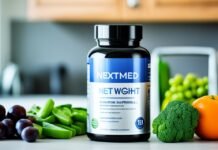Are you tired of feeling sluggish and low on energy? Do you wish there was a way to naturally boost your metabolism and regain your vitality? Look no further! In this article, we will uncover a world of metabolism boosting foods that can revitalize your energy levels and promote overall health. Say goodbye to fatigue and hello to a vibrant, energetic you!
Many people believe that the only way to increase metabolism is through intense exercise or restrictive diets. But what if we told you that there are delicious foods that can actually help speed up your metabolism and enhance weight loss? It may sound too good to be true, but science backs it up. By incorporating certain foods into your daily diet, you can give your metabolism a much-needed boost and reap the benefits of increased energy and improved well-being.
So, which foods should you be consuming to supercharge your metabolism? From spicy peppers that ignite thermogenesis to protein-rich sources that keep you full and satisfied, we will delve into a variety of options that are both flavorful and beneficial. Get ready to discover a whole new world of culinary delights that can elevate your metabolism and transform your health.
Key Takeaways:
- Metabolism boosting foods can naturally increase your energy levels and promote overall health.
- Contrary to popular belief, there are delicious foods that can speed up your metabolism and aid in weight loss.
- Spicy foods, protein-rich sources, green tea, citrus fruits, whole grains, healthy fats, and iron-rich foods are all excellent choices for boosting metabolism.
- Staying hydrated is crucial for maintaining an active metabolism.
- By incorporating metabolism boosting foods into your daily diet, you can achieve a revitalized, healthier you.
Understanding Metabolism and Weight Loss
Before we delve into the world of metabolism boosting foods, it’s essential to grasp the fundamental role metabolism plays in weight loss. Metabolism refers to the processes in our bodies that convert the food we eat into energy. This energy is then used to power all the functions necessary for our survival.
Weight loss occurs when we consume fewer calories than our bodies need to maintain their current weight. When this calorie deficit is created, our bodies turn to stored fat as a source of energy, leading to weight loss over time.
However, it’s important to note that everyone’s metabolism functions differently. Factors like genetics, age, body composition, and physical activity levels all influence how efficiently our bodies burn calories.
By understanding the connection between metabolism and weight loss, we can make informed decisions about the foods we choose to fuel our bodies. With the right knowledge, we can select metabolism boosting foods that support our weight loss goals.
When it comes to weight loss, simply eating fewer calories may not be enough. Incorporating metabolism boosting foods into your diet can give your weight loss efforts an extra edge. These foods have unique properties that can enhance your metabolism, helping you burn calories more efficiently.
Next, we’ll explore the various metabolism boosting foods that can supercharge your weight loss journey.
Spicy Foods for Increased Thermogenesis
When it comes to boosting your metabolism, fiery flavors can pack a powerful punch. Spicy foods, such as cayenne pepper and hot peppers, have been shown to increase thermogenesis—the process by which your body produces heat and burns calories.
Studies have found that the compound capsaicin, which gives chili peppers their spicy kick, can temporarily raise your metabolic rate, leading to a more efficient calorie-burning process.
If you’re looking to add some heat and metabolism-boosting benefits to your meals, consider incorporating these spicy foods into your diet:
- Cayenne pepper
- Jalapeno peppers
- Serrano peppers
- Habanero peppers
The Benefits of Capsaicin
Capsaicin, the active component in spicy foods, has been linked to several health benefits:
- Increased metabolism: The thermogenic properties of capsaicin can temporarily boost your metabolic rate, helping you burn more calories.
- Appetite suppression: Spicy foods can help reduce hunger and cravings, making it easier to manage your portion sizes and maintain a healthy weight.
- Improved circulation: Capsaicin can promote better blood flow, which is essential for delivering nutrients and oxygen to your muscles.
- Inflammation reduction: Some research suggests that capsaicin may have anti-inflammatory properties, which could benefit overall health and wellbeing.
“Spicy foods like cayenne pepper and hot peppers can give your metabolism a temporary boost and provide additional health benefits through compounds like capsaicin.” – Dr. Sarah Thompson, Nutritionist

Spicy Recipes to Try
Ready to spice up your meals? Here are a couple of delicious and metabolism-boosting recipes to get you started:
| Recipe | Ingredients |
|---|---|
| Cayenne Lime Shrimp Tacos | Cayenne pepper, lime juice, shrimp, tortillas, avocado, cilantro, red cabbage |
| Jalapeno Popper Stuffed Chicken | Jalapeno peppers, cream cheese, chicken breasts, bacon, breadcrumbs |
These recipes not only add a spicy kick to your meals but also provide a range of nutrients to support a healthy metabolism, including protein, fiber, and vitamins.
Remember, while spicy foods can offer a temporary metabolism boost, it’s important to incorporate them into a balanced diet that includes a variety of other metabolism-boosting foods for optimal health and wellness.
Protein-Rich Foods for Sustained Energy
Protein is a powerhouse nutrient that offers numerous benefits for your metabolism and overall health. Not only does it provide a thermogenic effect, meaning it requires more energy to digest compared to fats and carbohydrates, but it also keeps you feeling full for longer periods, preventing overeating and supporting weight loss efforts.
When it comes to incorporating protein-rich foods into your diet, it’s essential to choose high-quality sources that offer a variety of essential amino acids. Here are some of the best options to consider:
- Lean meats such as chicken breast and turkey
- Fatty fish like salmon and mackerel
- Eggs, a complete protein source
- Greek yogurt, packed with protein and probiotics
- Legumes and beans, including lentils and chickpeas
- Quinoa, a plant-based protein alternative
- Tofu and tempeh, excellent choices for vegetarians and vegans
- Seeds and nuts such as almonds and chia seeds
To provide a visual comparison of the protein content in various foods, here’s a table showcasing the grams of protein per serving:
| Food | Protein Content (per 100g) |
|---|---|
| Chicken Breast | 31g |
| Salmon | 22g |
| Eggs | 13g |
| Greek Yogurt | 10g |
| Lentils | 9g |
| Quinoa | 4g |
| Almonds | 21g |
Remember to consider your dietary preferences and requirements when selecting protein-rich foods. Whether you opt for animal-based or plant-based sources, aim to include a variety of proteins in your meals to reap their full benefits.
Recipe Inspiration: Protein-Packed Salad
Here’s a delicious recipe that combines different protein-rich ingredients:
“Tossed with spinach, sliced chicken breast, quinoa, and a sprinkle of almonds, this protein-packed salad offers a vibrant mix of flavors and nutrients. Drizzle with a lemon vinaigrette for an extra kick of citrusy goodness!”
By including protein-rich foods in your diet, you can support your metabolism, feel satisfied, and promote healthy weight management. Don’t forget the power of protein in sustaining your energy levels and achieving your wellness goals!
The Power of Green Tea
When it comes to metabolism boosting foods, green tea deserves a top spot on your list. Packed with powerful antioxidants called catechins, green tea has been found to increase metabolism and aid in fat oxidation.
These catechins work by stimulating the body’s thermogenic process, which produces heat and burns calories. The enhanced metabolism not only helps with weight management but also provides an added energy boost throughout the day.
But that’s not all – green tea offers numerous other health benefits as well. It is known to improve brain function, increase fat burning during physical activity, and reduce the risk of chronic diseases such as heart disease and type 2 diabetes.
To incorporate green tea into your daily routine, simply steep a tea bag or loose leaves in hot water for a few minutes. Add a squeeze of lemon or a drizzle of honey for added flavor, if desired. Enjoy this refreshing beverage in the morning or throughout the day to reap its metabolism-boosting benefits.

“Green tea is not only a delicious beverage, but its catechins have been shown to increase metabolism and promote fat oxidation. Incorporating green tea into your daily routine can provide an added boost to your metabolism and support your weight loss goals.” – Dr. Sarah Johnson, Nutritionist
Benefits of Green Tea:
- Increases metabolism
- Promotes fat oxidation
- Improves brain function
- Enhances fat burning during physical activity
- Reduces the risk of heart disease and type 2 diabetes
| Green Tea Brand | Price | Rating |
|---|---|---|
| Twining’s Green Tea | $3.99 | 4.5/5 |
| Bigelow Green Tea | $2.99 | 4/5 |
| Yogi Green Tea | $4.49 | 4.5/5 |
Citrus Fruits for Vitamin C and Fat Burning
Citrus fruits like oranges and grapefruits not only provide a burst of tangy flavor but also offer numerous health benefits. These juicy fruits are rich in vitamin C, a powerful antioxidant that supports immune function, collagen production, and overall well-being. However, the benefits of citrus fruits extend beyond vitamin C alone. Research suggests that these fruits can also aid in fat burning and boost metabolism, making them an excellent addition to your diet.
One of the key compounds found in citrus fruits that contributes to their metabolism boosting properties is called naringenin. Naringenin has been found to stimulate the production of enzymes involved in fat breakdown and metabolism. By increasing the activity of these enzymes, citrus fruits can potentially enhance fat burning processes in the body.
Furthermore, the high fiber content in citrus fruits can help promote satiety and prevent overeating. Foods that are high in fiber take longer to digest, keeping you feeling full for longer periods and reducing the likelihood of consuming excess calories. This, in turn, can support weight management and contribute to a more efficient metabolism.
So, how can you incorporate more citrus fruits into your diet? Here are a few ideas:
- Add sliced oranges or grapefruits to your salads for a refreshing and nutritious twist.
- Squeeze fresh lemon or lime juice over grilled chicken or fish for a tangy marinade.
- Blend citrus fruits into smoothies for a burst of flavor and added nutrients.
- Enjoy a glass of freshly squeezed orange juice in the morning for a vitamin C boost.
Remember to consume citrus fruits in moderation, as they do contain natural sugars. However, their numerous health benefits make them a worthwhile addition to any balanced diet.
The Power of Citrus Fruits
In summary, citrus fruits like oranges and grapefruits are not only delicious but also offer several benefits for boosting metabolism and promoting weight management. By incorporating these tangy delights into your daily routine, you can enjoy the refreshing taste while supporting your overall health and well-being.
| Fruit | Vitamin C Content (per 100g) | Naringenin Content (per 100g) |
|---|---|---|
| Orange | 53.2mg | 0.51mg |
| Grapefruit | 31.2mg | 0.03mg |
| Lemon | 53mg | 0.05mg |
| Lime | 29.1mg | 0.01mg |
Whole Grains for Fiber and Sustained Energy
When it comes to metabolism boosting foods, whole grains are a powerhouse of nutrition. Oats and quinoa, in particular, are packed with fiber and complex carbohydrates, making them excellent choices for sustained energy throughout the day.
The fiber content in whole grains adds bulk to your diet, promoting healthy digestion and preventing constipation. Moreover, fiber takes longer to digest, keeping you fuller for longer, and reducing the likelihood of overeating. This can be particularly beneficial for weight management and overall health.
In addition to their impressive fiber content, whole grains are rich in essential nutrients such as B-vitamins, magnesium, and iron. These nutrients play a vital role in energy production, ensuring that your metabolism functions optimally.
“Incorporating whole grains into your diet can provide a steady release of energy, helping you power through your day without feeling sluggish,” says nutrition expert Dr. Jane Sullivan.
The sustained energy provided by whole grains can support a healthy metabolism and contribute to weight management.
To incorporate more whole grains into your diet, consider options such as:
- Steel-cut or rolled oats for a nutritious breakfast
- Quinoa salads as a filling lunch option
- Whole wheat bread for sandwiches
- Whole grain pasta as a dinner staple
Including these options in your meals will not only enhance your metabolism but also provide a range of essential nutrients for overall well-being.
| Whole Grains | Fiber Content |
|---|---|
| Oats | 4 grams per ½ cup |
| Quinoa | 2.6 grams per ½ cup |
| Brown Rice | 1.8 grams per ½ cup |
| Whole Wheat Bread | 1.9 grams per slice |
Healthy Fats for Overall Metabolic Health
When it comes to boosting metabolism, it may come as a surprise that certain fats can actually be beneficial. While it’s important to limit unhealthy fats in your diet, incorporating healthy fats can support metabolic function and contribute to a well-rounded, nutritious eating plan.
One of the key players in this category is avocados. Rich in monounsaturated fats, avocados provide a source of healthy fats that can promote a healthy metabolism. Additionally, they are packed with fiber, which aids in digestion and helps regulate blood sugar levels.
Another fantastic source of healthy fats is oily fish. Fish such as salmon, mackerel, and sardines are high in omega-3 fatty acids, which have been shown to reduce inflammation and support heart health. These fatty acids also play a role in improving insulin sensitivity, which can help regulate metabolism and promote weight management.
Let’s not forget about nuts and seeds! These small powerhouses are packed with healthy fats, protein, and fiber. Almonds, walnuts, flaxseeds, and chia seeds are all excellent choices that can support metabolic health while providing a satisfying crunch to your meals or snacks.
“Incorporating healthy fats into your diet can have a positive impact on overall metabolic health. Avocado, oily fish, nuts, and seeds are just a few delicious options that can fuel your body while promoting a vibrant metabolism!”
Remember, it’s essential to consume healthy fats in moderation as part of a balanced diet. Including a variety of metabolism boosting foods, such as those rich in healthy fats, can help optimize your metabolism and improve overall health.
So go ahead and embrace the power of healthy fats on your journey to a revitalized and healthier you!
Metabolism Boosting Foods Rich in Healthy Fats
| Food | Healthy Fat Content | Other Key Nutrients |
|---|---|---|
| Avocado | Good source of monounsaturated fats | Fiber, vitamins, minerals |
| Oily Fish (salmon, mackerel, sardines) | High in omega-3 fatty acids | Protein, vitamins, minerals |
| Nuts (almonds, walnuts) | Rich in monounsaturated fats | Protein, fiber, vitamins, minerals |
| Seeds (flaxseeds, chia seeds) | High in omega-3 fatty acids | Fiber, protein, vitamins, minerals |
Include these metabolism-boosting foods in your diet to take advantage of the benefits they offer. They not only support metabolic health but also provide a delicious and nutritious addition to your meals and snacks.
Iron-Rich Foods for Efficient Metabolism
Iron is a vital mineral that plays a crucial role in metabolism. It is responsible for transporting oxygen to cells, ensuring their proper functioning and energy production. Including iron-rich foods in your diet can help optimize your metabolism and promote overall health.
Here are some top iron-rich foods that you can incorporate into your meals:
| Food | Iron Content (per serving) |
|---|---|
| Spinach | 3.2 mg |
| Lean Beef | 2.9 mg |
| Chickpeas | 2.4 mg |
| Lentils | 3.3 mg |
| Tofu | 2.7 mg |
Incorporating these iron-rich foods into your meals can provide a natural boost to your metabolism. Whether you’re a vegetarian or a meat lover, there are plenty of options to choose from.

Hydration and Metabolic Performance
Staying hydrated is essential for maintaining optimal metabolic performance. Water not only keeps us hydrated, but it also plays a crucial role in supporting various bodily functions, including digestion and metabolism. When it comes to boosting metabolism, adequate hydration is often overlooked but is just as important as consuming metabolism boosting foods.
Water helps to transport nutrients throughout the body, ensuring that our cells receive the necessary energy to function efficiently. Without proper hydration, our metabolism can slow down, leading to decreased energy levels and potential weight gain. Additionally, dehydration can negatively impact exercise performance and overall physical endurance, further affecting metabolic efficiency.
To maximize your metabolic performance, it is recommended to drink an adequate amount of water throughout the day. While individual needs may vary, it is generally recommended to consume at least 8 glasses (64 ounces) of water daily. However, factors such as physical activity, climate, and overall health may require an increased intake.
Tip: Spread your water intake evenly throughout the day and incorporate other hydrating beverages such as herbal teas and infused water to add flavor and variety.
“Hydration is crucial for maintaining an active metabolism. Just like you fuel your body with nutritious foods, don’t forget to fuel it with water too!”
Benefits of Hydration for Metabolism:
- 1. Supports digestion and nutrient absorption
- 2. Enhances metabolism and calorie burning
- 3. Promotes detoxification and waste elimination
- 4. Boosts energy levels and physical performance
- 5. Helps maintain a healthy weight
Remember, it’s important to listen to your body’s thirst signals and drink water when you feel thirsty. Additionally, certain factors such as physical activity, exposure to heat, and illness may increase your water needs. By staying hydrated and incorporating metabolism boosting foods into your daily diet, you can optimize your metabolic performance and achieve vibrant energy levels.
Hydration and Metabolic Performance: A Winning Combination
| Benefits of Hydration | Benefits of Metabolism Boosting Foods |
|---|---|
| – Supports digestion | – Increases calorie burning |
| – Enhances nutrient absorption | – Supports weight loss |
| – Helps detoxify the body | – Provides sustained energy |
| – Improves physical performance | – Promotes overall health |
Incorporating Metabolism Boosting Foods into Your Diet
Now that you have gained knowledge about the various metabolism boosting foods, it’s time to put that knowledge into action and incorporate these foods into your daily diet. By doing so, you can optimize your metabolic rate, support your weight loss efforts, and improve your overall health. Here are some practical tips and ideas to make these metabolism boosting foods a regular part of your meals:
1. Plan Your Meals
Start by planning your meals. Consider incorporating metabolism boosting foods into each meal to ensure a consistent intake throughout the day. This will help maintain a steady metabolic rate and keep your energy levels up. Be creative with your recipes and experiment with different combinations of these foods to keep your meals interesting and delicious.
2. Fill Your Pantry with the Right Ingredients
Stock your pantry with metabolism boosting foods. This way, you’ll always have them on hand when preparing your meals. Make a grocery list and include items such as spicy peppers, lean proteins, green tea, citrus fruits, whole grains, and healthy fats. Having these ingredients readily available will make it easier for you to incorporate them into your daily meals.
3. Be Mindful of Portion Sizes
While metabolism boosting foods are beneficial for weight loss, it’s important to remember that portion sizes still matter. Be mindful of how much you consume and practice portion control. A balanced diet that includes a variety of metabolism boosting foods, paired with portion control, will yield the best results in terms of weight loss and overall health.
4. Experiment with Recipes
Get creative in the kitchen and experiment with different recipes that incorporate metabolism boosting foods. Look for inspiration online or in cookbooks. Try new flavor combinations and cooking techniques. By experimenting with recipes, you’ll not only prevent food boredom, but you’ll also discover new and exciting ways to enjoy these foods.
5. Add Variety to Your Meals
Don’t limit yourself to just a few metabolism boosting foods. Remember, variety is key to a well-rounded and nutritious diet. Explore different options within each category of metabolism boosting foods. For example, if you enjoy spicy foods, try different types of peppers or experiment with spicy condiments. The more variety you incorporate into your meals, the more nutrients you’ll receive, and the more enjoyable your dining experience will be.
6. Make it a Lifestyle
Incorporating metabolism boosting foods into your diet shouldn’t be a temporary fix. Instead, strive to make it a lifestyle. Focus on sustainable changes that you can maintain in the long run. Consistency is key when it comes to reaping the benefits of these foods. Aim to make them a permanent part of your dietary habits for lasting results.
By following these tips and incorporating metabolism boosting foods into your diet, you’ll be well on your way to supporting weight loss and achieving vibrant energy. Embrace the power of these foods and discover a revitalized, healthier you.
| Metabolism Boosting Foods | Benefits |
|---|---|
| Spicy Foods (Cayenne Pepper, Hot Peppers) | Increases thermogenesis, boosts metabolism temporarily |
| Protein-Rich Foods (Lean Meat, Fish, Legumes) | Promotes fullness, supports muscle growth, boosts metabolism due to the thermic effect of food |
| Green Tea | Contains catechins that increase metabolism and promote fat oxidation |
| Citrus Fruits (Oranges, Grapefruits) | Rich in vitamin C, aids in fat burning, boosts metabolism |
| Whole Grains (Oats, Quinoa) | Loaded with fiber and complex carbohydrates, sustains energy levels and boosts metabolism |
| Healthy Fats (Avocado, Olive Oil) | Supports metabolic health and hormone production |
| Iron-Rich Foods (Spinach, Red Meat) | Optimizes metabolism by aiding oxygen transport to cells |
Conclusion
By incorporating metabolism boosting foods into your diet, you can supercharge your energy levels and support your weight loss journey. These foods are not only delicious but also offer a myriad of health benefits, helping you achieve a revitalized and healthier version of yourself.
From spicy foods like cayenne pepper to protein-rich options such as lean meats and legumes, each bite contributes to a faster metabolic rate and increased calorie burning. Additionally, green tea, citrus fruits, whole grains, and healthy fats all play a role in optimizing your metabolism and promoting overall metabolic health.
Remember, weight loss is not just about cutting calories; it’s about nourishing your body with the right nutrients. Embrace the power of metabolism boosting foods and make them a staple in your daily diet. With consistency and a balanced approach, you’ll experience enhanced energy, improved digestion, and sustainable weight loss that lasts.
FAQ
What are metabolism boosting foods?
Metabolism boosting foods are foods that can increase your metabolism, allowing your body to burn more calories and produce more energy. These foods often contain specific nutrients or compounds that have been shown to have a positive impact on metabolism.
How do metabolism boosting foods contribute to weight loss?
Metabolism boosting foods can contribute to weight loss by increasing your body’s calorie-burning potential. When your metabolism is functioning at a higher rate, it can help you burn more calories even at rest, making it easier to achieve a calorie deficit and lose weight.
Are there any side effects of consuming metabolism boosting foods?
In general, consuming metabolism boosting foods is safe and beneficial for overall health. However, it’s important to remember that moderation and balance are key. Some people may experience digestive issues or discomfort if they consume large amounts of certain metabolism boosting foods.
Can metabolism boosting foods alone help me lose weight?
While metabolism boosting foods can support weight loss efforts, they are not a magic solution. In order to lose weight effectively, it’s important to maintain a balanced diet, engage in regular physical activity, and create a calorie deficit. Metabolism boosting foods can complement these efforts and enhance results.
How can I incorporate metabolism boosting foods into my daily diet?
There are several ways to incorporate metabolism boosting foods into your daily diet. You can add spices like cayenne pepper or turmeric to your meals, include protein-rich foods like lean meats and legumes, enjoy a cup of green tea, incorporate citrus fruits into your snacks or salads, include whole grains in your meals, and choose healthy fats like avocados and nuts.
Are there any specific times of day when metabolism boosting foods are more effective?
There is no specific time of day when metabolism boosting foods are more effective. The key is to spread out your intake of these foods throughout the day to provide a steady supply of nutrients and support metabolic function. It’s also important to listen to your body and consume these foods when you feel hungry or need an energy boost.

























































